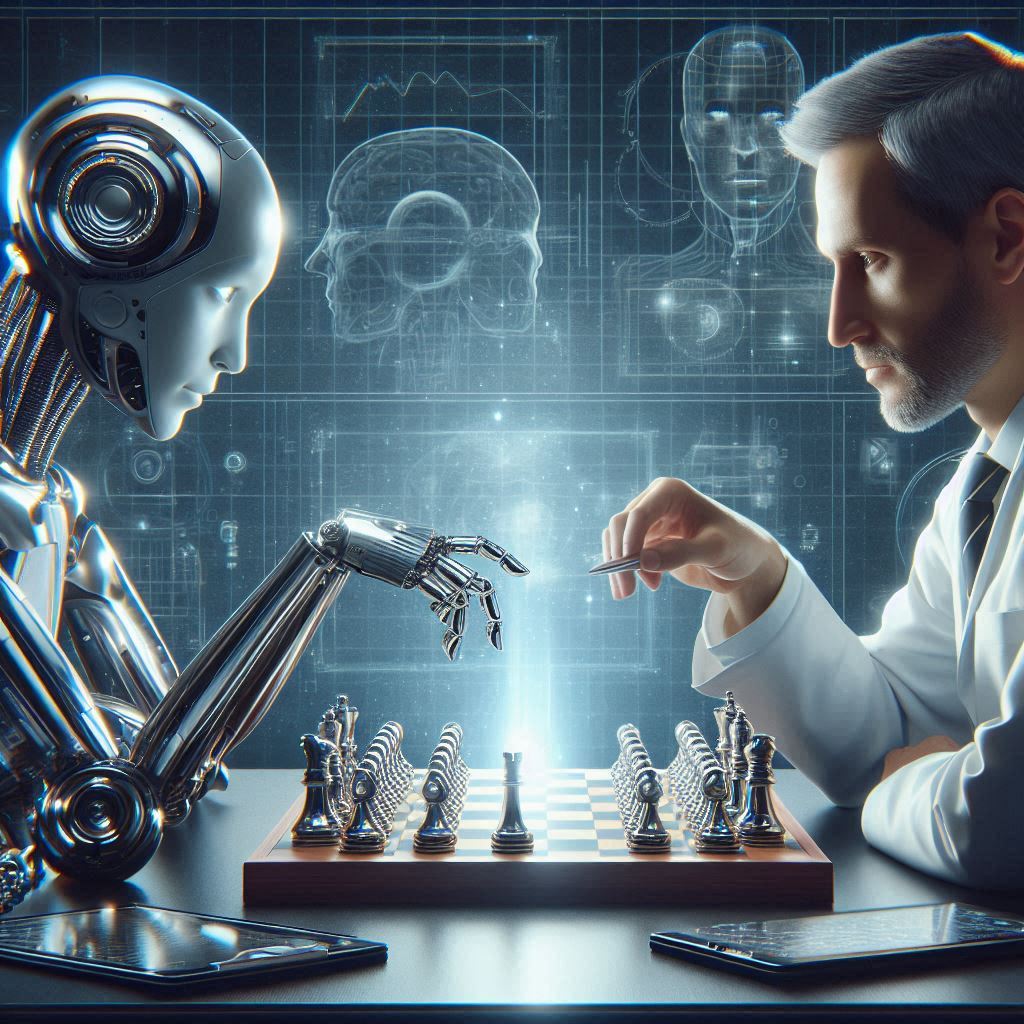Have you ever observed a 2-year-old meticulously picking out broccoli bits from her bowl of noodles and swiftly discarding them with a flick – as if to say, ‘Nice try, broccoli, but you won’t trick me!’?

This everyday scenario highlights the remarkable human ability to identify and categorize objects in our surroundings. Object recognition, a cornerstone of perception, allows us to interpret and navigate the world easily. Researchers have long marvelled at the brain’s proficiency in this domain, noting its accuracy and speed. In parallel, artificial intelligence (AI) has made significant strides, particularly with deep neural networks. While mirroring human capabilities, these advancements also reveal distinct differences crucial for advancing AI technology, especially in applications like wildfire detection.
Exploring Human and AI Approaches
Human object recognition relies on intricate neural processes that rapidly analyze visual cues. This biological mechanism enables us to discern objects based on shape, colour, and context, seamlessly integrating sensory inputs. In contrast, AI approaches object recognition through complex algorithms designed to mimic human neural networks. While AI can achieve impressive accuracy, it depends heavily on vast datasets and iterative training to refine its recognition abilities, which significantly differs from the innate learning mechanisms and contextual understanding humans leverage.
Key Distinctions and Insights
Examining the differences between human and AI object recognition reveals profound insights into perception and cognitive processes. Bridging these gaps is pivotal for advancing AI technologies toward human-like proficiency, particularly in high-stakes applications like wildfire detection.
This blog post is the first in a series of three where we will delve into:
- The similarities and fundamental differences in capabilities between the human brain and AI.
- The importance of large and high-quality datasets for machine/deep learning applications.
- How such datasets are crucial for training AI specifically for wildfire detection.
Stay tuned for our next installment, where we will explore how insights from human neural processes can revolutionize AI training methods, paving the way for more sophisticated and effective object recognition systems.
Human Object Recognition
Humans possess an extraordinary ability to effortlessly recognise and categorise objects, even in complex and varied environments. For instance, identifying a cat — whether sitting, running, or partially concealed behind a curtain — is a task humans perform seamlessly. This capability relies on intricate neural processes within the brain.
Neural Processes Involved
Human object recognition initiates with extracting basic visual features such as edges and textures in lower visual areas like V1. These visual cues progress through hierarchical pathways within the ventral stream, ultimately leading to the identification and categorisation of objects in higher visual cortex regions like the inferior temporal cortex (IT).
The ventral (What Pathway; image below in purple) and dorsal visual streams (Where Pathway; image below in green) complement each other: the ventral stream specialises in detailed visual processing essential for object identification, while the dorsal stream integrates spatial and contextual information with visual features. Neural networks in these pathways detect and integrate features specific to object categories, facilitated by feedback mechanisms that refine object representations using memory and attentional cues. This hierarchical and distributed processing enables rapid and efficient object recognition within milliseconds of visual stimulus, highlighting the brain’s capacity to unify diverse visual information into coherent object representations crucial for interacting with and understanding the world.
 Ventral-dorsal streams Image Source: https://en.m.wikipedia.org/wiki/File:Ventral-dorsal_streams.svg
Ventral-dorsal streams Image Source: https://en.m.wikipedia.org/wiki/File:Ventral-dorsal_streams.svg
Perceptual Attributes
Researchers at the Max Planck Institute for Human Cognitive and Brain Sciences have identified 49 fundamental properties that the human brain utilises to recognise and categorise objects. These properties encompass physical characteristics such as colour, shape, and size, as well as abstract attributes like an object’s naturalness, mobility, value, or association with animals. These properties are sufficient for categorising nearly any object encountered in our surroundings. This insight not only elucidates how the brain processes and categorises objects but also provides valuable perspectives for advancing artificial intelligence development.
AI and Object Recognition: Progress and Challenges
Advancements in AI Object Recognition
Artificial Intelligence (AI), particularly through deep neural networks, has made remarkable strides in object recognition. Despite these advances, AI’s methods and mechanisms differ significantly from human perception.
Deep Learning Approach for Object Recognition
AI-driven object detection technologies heavily rely on deep learning (DL), especially Convolutional Neural Networks (CNNs). These networks have revolutionised the field by surpassing traditional methods in accuracy and robustness. CNNs excel in learning from large, labelled datasets, extracting intricate patterns that enhance object localisation and classification precision. Deep neural networks, a core component of deep learning – a subset of machine learning – use many layers to model and understand complex patterns in data, earning them the “deep” label.

Deep Neural Networks Image Source: AWS
There are three primary types of neural networks used in deep learning:
- Feed-forward neural network: This simple network directs information in one direction, from input to output. It effectively detects fraudulent financial transactions by training on labelled data and predicting new transactions.
- Convolutional neural network (CNN): Inspired by the brain’s visual cortex, CNNs are designed for perceptual tasks such as image recognition. They can also handle tasks like natural language processing and recommendation engines. CNNs process images by identifying unique features and are used in applications such as medical diagnosis, brand management, and wildfire detection.
- Recurrent neural network (RNN): RNNs have loops allowing data to be reprocessed, making them ideal for sequential data tasks like text or speech prediction. They analyse sequences of transactions for fraud detection by learning from individual and combined inputs over time.
Bridging the Gap Between Human and AI Recognition
While AI’s deep learning models have achieved impressive results, they still differ fundamentally from human perception. Unlike humans, AI systems often require vast amounts of labelled data and extensive computational power to train effectively. Moreover, AI models can struggle with generalising knowledge across different contexts, a task humans perform effortlessly. Understanding these differences is crucial for advancing AI technologies, particularly in applications requiring high accuracy and adaptability, such as wildfire detection.
Popular AI Models
In object recognition, several deep learning models have gained popularity for their effectiveness. Some of the best and most popular models include:
- AlexNet: One of the pioneering convolutional neural networks (CNNs) that significantly improved image classification accuracy.
- VGG (Visual Geometry Group) Networks: Known for their simplicity and depth, variants like VGG16 and VGG19 are widely used in research and applications.
- ResNet (Residual Network): Introduced residual connections to address the vanishing gradient problem, enabling the training of deep networks up to hundreds of layers.
- Inception (GoogLeNet): Utilizes inception modules with multiple convolutions at different scales to capture features effectively.
- MobileNet: Optimized for mobile and embedded vision applications, using depthwise separable convolutions to reduce computational complexity.
- YOLO (You Only Look Once): Known for its real-time object detection capabilities, which enable simultaneous prediction of bounding boxes and class probabilities.
- Faster R-CNN: A region-based CNN that uses a Region Proposal Network (RPN) to generate region proposals, followed by a detection network to classify objects.
- Mask R-CNN: Extends Faster R-CNN by adding a branch to predict segmentation masks in each Region of Interest (RoI).
- EfficientNet: A family of models that achieve state-of-the-art accuracy with an optimal balance between model size and performance by scaling network width, depth, and resolution.
- BERT (Bidirectional Encoder Representations from Transformers): While primarily used for natural language processing, BERT’s architecture has also been adapted for tasks like image-text retrieval and visual question answering.
These models vary in complexity, performance metrics, and suitability for different tasks within object recognition, such as image classification, object detection, and instance segmentation. The choice of model often depends on specific application requirements like speed, accuracy, and available computing resources.
Examples of AI Successes in Object Recognition
AI-driven object detection technology has transformative applications across multiple industries, contributing to higher accuracy and real-time capabilities.
Medical Imaging: AI excels in analysing medical images such as X-rays, MRIs, and CT scans to detect and diagnose various conditions, aiding radiologists in interpreting and diagnosing them accurately.
 AI-enhanced medical imaging
AI-enhanced medical imaging
Surveillance and Security: AI-powered systems significantly enhance surveillance capabilities by automatically detecting and tracking objects of interest, identifying potential threats, and bolstering overall security measures in public spaces and sensitive facilities.
Autonomous Systems: AI plays a pivotal role in advancing autonomous vehicles, robotics, drones, and industrial automation by enabling these systems to perceive and react to their environments. These systems rely on AI to perceive and react to their surroundings, enabling real-time recognition of pedestrians, vehicles, and obstacles to ensure safe navigation and operational efficiency.
Wildfire Detection: AI innovations in wildfire detection are transforming environmental monitoring. exci’s advanced AI algorithms analyse ground-based and satellite imagery to swiftly detect smoke plumes and hotspots in remote areas within minutes of ignition. This capability facilitates prompt intervention and mitigation efforts, crucial for minimising wildfire impact.
 exci’s AI technology detected wildfire in Dulong, Australia
exci’s AI technology detected wildfire in Dulong, Australia
Comparing Human and AI Object Recognition
While AI has made significant strides in object recognition, there remain notable differences compared to human abilities. Understanding these distinctions provides valuable insights into improving deep neural networks:
Processing Methods:
Human Perspective: Humans utilise complex neural networks in the brain, processing visual information through hierarchical extraction of features like edges, shapes, and textures. These elements are integrated to form coherent object perceptions.
AI Perspective: AI employs machine learning algorithms, particularly deep learning, to recognise objects. This process involves training neural networks on extensive labelled datasets to discern distinctive features and patterns unique to different objects.
Learning and Adaptation
Human Perspective: Humans possess the ability to generalise from limited examples, adapt to new environments, and recognise objects under various conditions such as different angles or lighting. Our object recognition skills develop through experience and education.
AI Perspective: AI relies on vast amounts of labeled data to effectively learn object recognition. It typically performs well within the conditions it’s trained for but can struggle with variations not encountered during training unless explicitly designed for robustness.
Speed and Accuracy
Human Perspective: Human recognition tends to be faster and more accurate in familiar contexts. We excel at quickly identifying objects even in cluttered scenes or when partially obstructed.
AI Perspective: Once trained, AI can swiftly process extensive data, consistently achieving high accuracy rates in specific tasks. However, compared to humans, it may face challenges in real-time processing in dynamic environments.
Robustness and Flexibility
Human Perspective: Humans demonstrate proficiency in recognising objects across diverse contexts, adapting to new situations, and extrapolating from limited examples.
AI Perspective: AI systems excel in achieving high accuracy within defined parameters but may lack the flexibility and robustness of human perception. They often require retraining or fine-tuning to perform effectively in new or varied conditions.
Contextual Understanding
Human Perspective: Human object recognition integrates with contextual understanding, memory, and higher-level cognitive processes. This holistic approach allows us to infer meanings, intentions, and relationships associated with objects.
AI Perspective: Current AI object recognition systems primarily focus on identifying and categorising objects based on visual features. They generally lack the deeper contextual understanding and inference capabilities of human cognition.
Ethical Considerations and Decision-making
Human Perspective: Human object recognition involves ethical reasoning and decision-making, balancing privacy concerns, societal norms, and ethical implications across diverse applications.
AI Perspective: AI systems necessitate careful design and oversight to ensure ethical deployment and decision-making frameworks are robust and aligned with societal values.
Implications of These Differences
Understanding the distinct learning mechanisms between AI and humans is critical for advancing artificial intelligence technologies. While AI excels in specialized tasks, its limited generalization compared to humans restricts its adaptability to new or unforeseen situations without additional training or reprogramming.
Future Directions
Bridging the gap between human and AI capabilities, particularly in contextual understanding and generalisation, is essential for developing robust and versatile AI applications. Ultimately, achieving responsible deployment and improvement of AI requires leveraging AI’s strengths in efficiency and scalability. It also entails integrating human capabilities like creativity, ethical reasoning, and social understanding to enhance performance and address emerging challenges across various applications.
Conclusion
In this post, we’ve explored the fascinating world of object recognition, comparing the remarkable capabilities of human perception with the advancements made by AI. While AI has achieved significant progress, key differences remain in how objects are recognised and categorised. These differences highlight the potential for further improvements in AI by leveraging insights from human neural processes.
In the next post, we will explore how these human neural insights can enhance AI training, bridging the perception gap between humans and machines. Stay tuned for our next post, where we will explore how understanding human neural processes can inform and improve AI training, leading to more sophisticated and human-like object recognition capabilities in AI systems.
by Gabrielle Tylor
exci – The Smoke Alarm for the Bush
27 June 2024
Don’t let Wildfires become Catastrophic!
Connect with our friendly team for a full demonstration of how Exci’s system detects wildfires within minutes, helping you protect your assets and community.
Email: info@exci.ai
International: +61 458 594 554
Australia: 1300 903 940
Visit us on our website to find out more: https://www.exci.ai/

 Ventral-dorsal streams Image Source: https://en.m.wikipedia.org/wiki/File:Ventral-dorsal_streams.svg
Ventral-dorsal streams Image Source: https://en.m.wikipedia.org/wiki/File:Ventral-dorsal_streams.svg AI-enhanced medical imaging
AI-enhanced medical imaging exci’s AI technology detected wildfire in Dulong, Australia
exci’s AI technology detected wildfire in Dulong, Australia